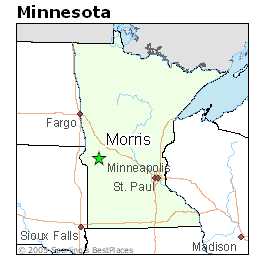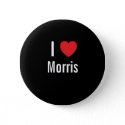I remember needing a new tennis racket in a hurry when I was taking a class in St. Cloud. The racket I was using at the start of the class bit the dust.
So where did I go? Well, I thought in terms of a "sporting goods store." I raced over to the only one I was aware of, and was informed by a sign on the door that the store was "closed for inventory." I had about 50 bucks that was burning a hole in my pocket. I thought the sign was strange. Certainly they had a lot of goods there.
Things were slower moving in the 1970s. Today businesses are hungry for every penny they can wrangle. My class was at St. Cloud State University.
I bring all this up to remind how we once looked for specialty stores for so many things. "Big box" with all its efficiency and economy hadn't taken hold yet. Instead there was a sea of smaller stores dealing in a narrow range of goods.
Was the "big box" not yet practical? Where the innovators just not on the scene yet? Or were they in too few places, metropolitan certainly, to capture the imagination of the broad American public?
I do recall some stores that seemed headed in the right direction. I also recall that they had a reputation of selling too much "junk."
In my youth we did most of our shopping at the mom and pop businesses. We can feel nostalgia about that now. But we wouldn't trade the current convenience and advantages we feel with the big stores, for that Norman Rockwell-esque past. It was a past with "main street" having a special allure.
One night each week the stores in Morris would be open. It would be a social event as we made our rounds that night, maybe pausing to dine at the old Del Monico Cafe. It was the days of parking meters and the pool hall. It's amazing to think parking meters once seemed justified downtown.
The city hesitated with the Columbia Avenue extension because of fear traffic might be siphoned off from main street. (It's the road that comes onto the highway by the present-day Pizza Hut.) I had better chalk that up to a theory or legend rather than undisputed fact. The theory would carry weight.
No one would have dreamt main street would go through a fundamental change. If you had told people shoppers would go elsewhere, they'd figure main street would die. They would panic. They might figure some extraordinary measure from the government would be needed.
Actually that's sort of what happened. We got the "Main Street" program administered by Ron Meiss. No doubt its intentions were good. We heard lectures from experts on how those mom and pop businesses could make cosmetic adjustments to stay viable. There was emphasis on making your rear entrance as inviting as your front entrance.
City Center Mall was on the drawing board, I remember, and it was assailed as being too plain aesthetically. I'm not sure any changes were made. City Center Mall reflected the best of intentions. It would combine the fashionable concept of mall shopping with the main street atmosphere.
I'm not a businessman so I can't render a verdict on how City Center Mall has turned out. From the standpoint of being bustling vs. non-bustling, it certainly seems to be the latter. I think it was envisioned as a more bustling place. I think it would be a good idea for Thrifty White Drug to just take over the whole main floor and leave that place on the west side of Atlantic Avenue. I scratch my head over their two separate locations. Actually I thought it was just fine for Stevens County government offices to be on the main floor. My they were accessible and convenient. I scratch my head over whey they couldn't just stay there.
Maybe we didn't need that new Taj Mahal of a courthouse.
Our main street adjusted as the years went by. The normal market forces seemed to take over. The government "Main Street" program was good for dispensing a few lofty thoughts. We seemed to look to government more in those days.
We have plenty of activity on main street these days. The personality is different but it's vibrant in its own way.
We see businesses that don't necessarily have a lot of people traffic. You can walk along the sidewalk anytime without having to dodge people or say "excuse me." People don't walk along with shopping bags full of stuff.
Is there any place in Morris today where a clerk will assist you trying on shoes? That seems quaint to reflect on now. Oh, I certainly don't miss it.
I think the purchase of clothes and shoes should be left as a private activity. And this isn't even to mention underwear. We had a J.C. Penney store on main street where you could buy underwear. If you mentioned to a clerk that you were looking for underwear (assuming you'd want to divulge that), that clerk would escort you to where they were. And then, most likely, stand there silent as your companion in this quest for necessary clothing.
I never cared for this arrangement at all. Apparently I wasn't alone. A TV commercial for PayLess Shoes many years ago poked fun at how clerks would accost you in the old days. "Can I help you?"
The actor/customer retorted with a sharp "no!"
If you expressed interest in a pair of shoes, the clerk would go behind that curtain and return moments later, perhaps saying "we don't have your size." After about two tries, you might say to the clerk, "well, what shoes do you have that are my size?"
The clerk would personally tie on one of those shoes for you. You were then expected to walk a few steps to get a feel, as if wearing only one shoe would really give you this opportunity. The clerk stared, just like when you were taken to where the underwear was.
It was no setting in which to make a relaxed, reasoned shopping decision. I might say "I'll take this" just to get the heck out of there.
There were two men's clothing specialty stores on main street. We had Palmer's on the west side of main and Wayne's on the east. Good ol' Wayne Morrissey always sponsored "Wayne's Mets" in the Morris Little League. I wonder if that was because of Jerry Koosman playing with the Mets. At Palmer's you might run into Myron Syverson.
These were well-intentioned businesses, no doubt, but they felt they had to smother customers with attention. Maybe in a previous time customers expected or wanted this. And I'm wondering: Why couldn't these stores sell shoes too? Why the separate clothing and shoe stores? Sometimes when you buy clothes you seek an ensemble that is coordinated. Shoes must blend in.
Instead we had all these goods separated off into the small main street businesses. You paid separately at each store, not with the convenience of writing one check as we do today at a Wal-Mart, whereupon we wheel a whole big basket of stuff out to our cars - hardware, clothing, groceries and basically everything.
You still see your friends at Wal-Mart just like you did in the old days traipsing along the length of our beloved Atlantic Avenue. Times change and the marketplace adjusts. Atlantic Avenue isn't the same as in the Norman Rockwell days, but it isn't blighted. It's just different.
The old model began to break down, I feel, when the store known today as Shopko opened. Here's a trivia question: What was it called then? Yes, "Gibson's." That name is getting buried more in time which is why I posed the "trivia" question.
Gibson's presented an array of goods under one roof and on the edge of town and with free parking. Surely this was the new wave.
Eventually the main street men's clothing stores became dinosaurs. I'm told that in their heyday, before I came along, hats were a prime stock in trade of such stores. Have you ever noticed that in old newsreel footage of Yankee Stadium, where they show the fans, all the men wear hats? It seemed most of them smoked too.
How times change. And how hard it might be to foresee.
- Brian Williams - morris mn minnesota - bwilly73@yahoo.com






















No comments:
Post a Comment